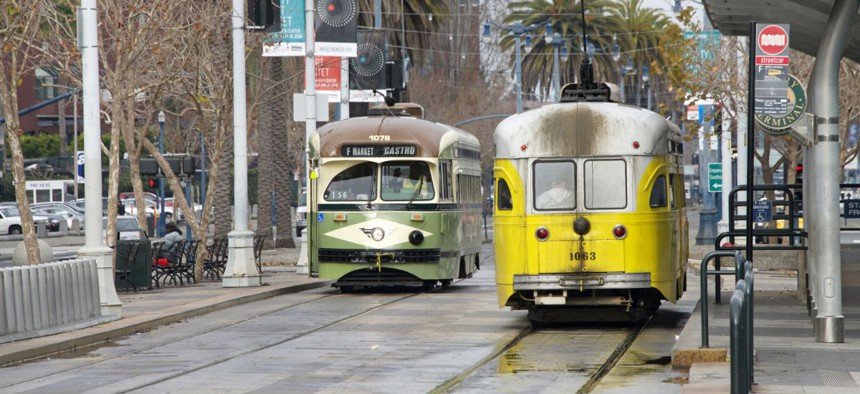San Francisco’s Plan to Improve Public Transit Access for Underserved Communities

San Francisco, California Shutterstock

Connecting state and local government leaders
A light rail extension and bus fleet replacement are the biggest investment, but Muni also has smaller adjustments in the works.
The San Francisco Municipal Transportation Agency adopted its first-ever Muni Equity Strategy Report on Tuesday to increase public transit access to underserved communities throughout the metro area.
Seven districts with high concentrations of minority, low-income, disabled, and senior residents were dubbed “equity strategy neighborhoods”: Bayview, Chinatown, Excelsior/Outer Mission, Mission, Tenderloin/SoMa, Visitacion Valley, and Western Addition.
In those neighborhoods, SFMTA will focus on improving timeliness, service gaps and crowding to keep public transit competitive with driving, according to the report:
SFMTA staff identified two to three key needs for each neighborhood and for routes heavily used by seniors and people with disabilities based on where data revealed underperformance relative to peer lines. SFMTA staff were not looking to develop strategies that could address every single challenge for transit performance in the neighborhoods, but rather focus on a few actionable strategies that could be implemented quickly and are expected to make a significant difference in the reliability and quality of service.
Key needs included redesigning rail schedules, increasing peak period service, reassigning buses, partnering with agencies like Caltrans to manage freeway traffic, and reevaluating routes for particular neighborhoods.
“Dealing with SFMTA has not always been a pleasant experience for me,” Calvin Welch, member of the nonprofit advocacy group Human Services Network, told the board, reported The San Francisco Examiner. “This, however, was a startling reversal.”
Welch, an opponent of “transit gentrification,” felt the strategy could bring buses to often forgotten, less dense neighborhoods.
The report identifies $21 million in new capital expenditures and $2.6 billion in capital projects, predating the equity strategy, that benefit underserved low-income and minority customers. The two largest investments include the Central Subway light rail extension, most benefitting Chinatown, and a complete bus fleet replacement with “cleaner, quieter and more reliable vehicles” by 2019.
New service strategies will cost an estimated $7.5 million annually, but those costs will be offset by efficiency improvements.
Dave Nyczepir is a News Editor at Government Executive’s Route Fifty. (Photo by Sheila Fitzgerald / Shutterstock.com)

NEXT STORY: Watch 3,300 Pounds of Explosives Destroy Part of a Roadside Rock Wall in Oregon





